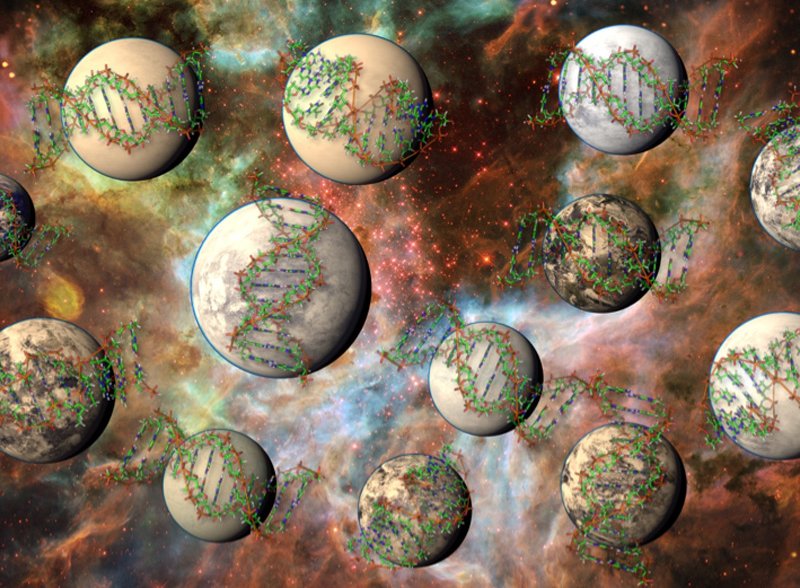Interview with Col. Aerial Sánchez of the Uruguayan Air Force UFO Commission CRIDOVNI
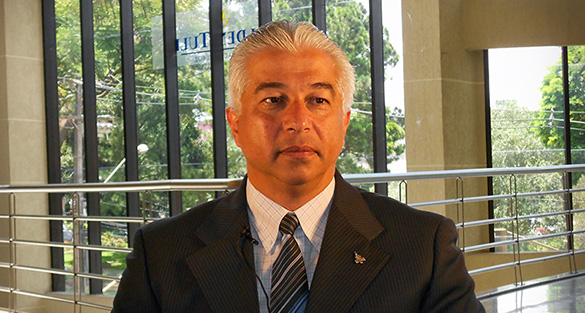
Integrating the Latin American Official Commissions
An Exclusive Interview with Colonel (Ret.) Ariel Sánchez, a veteran of the Uruguayan Air Force’s UFO Commission CRIDOVNI
By J. Antonio Huneeus & Yohanan Díaz Vargas
The Uruguayan Air Force Colonel (Ret.) Ariel Sánchez is one of the most experienced official UFO investigators in the world. He joined the Uruguayan Air Force’s CRIDOVNI (Spanish acronym for Commission for the Reception and Investigation of Reports of Unidentified Flying Objects) in 1989 when he was a captain. Since then he served the Commission in multiple ways as investigator, secretary, president, and now technical director, a position he has held since retiring from active duty in the air force in 2012.
Colonel Sánchez has also been CRIDOVNI’s international face and has appeared many times at national and regional conferences, both officially in uniform and as a private citizen and investigator. We caught up with Colonel Sánchez recently at the IV Global UFO Forum and UFO Summit of the Americas held in Foz de Iguaçu, Brazil, in December 2012.
In 1979, Uruguay was the first South American country to establish an official UFO agency. Other countries in the region eventually followed the Uruguayan model, and various agencies or departments were started in Chile, Peru, Ecuador, and Argentina. Colonel Sánchez addressed the issue of cooperation among these agencies, as well as CRIDOVNI’s integration of civilian investigators into an official commission, a model that was recently followed in Argentina.
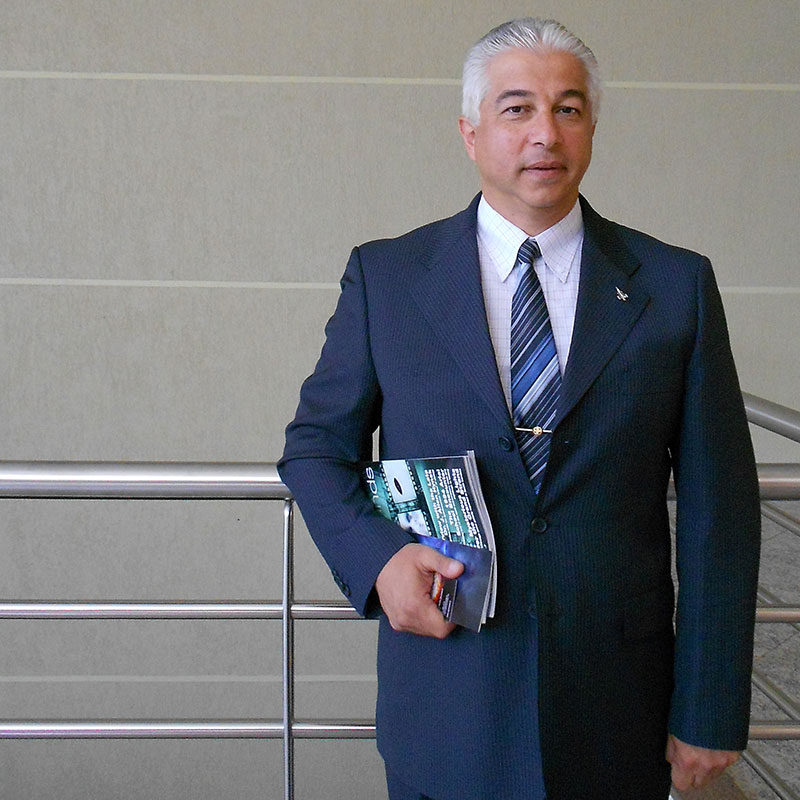
J. Antonio Huneeus (AH): Colonel Sánchez, can you please tell us a little bit about your military background and how you became involved with CRIDOVNI?
Ariel Sánchez (AS): Well, I entered the air force in 1976, and in 1986, I graduated as a second lieutenant of the Uruguayan Air Force. Later, I became specialized in air traffic control with radar and in aviation security. Around 1989, I was asked to join the Commission for the Reception and Investigation of Reports of Unidentified Flying Objects (CRIDOVNI) of the Uruguayan Air Force, as secretary of the Commission and as an investigator. So, beginning in 1989, I joined the Commission to which I still belong. I was the president, and currently am the technical director.
AH: Why don’t you explain a bit about how and why the Commission was created?
AS: During the 1960s and 1970s there were many reports of UFOs in the skies of South America. Uruguay was not isolated from this, and the air force began to learn about the reports. Then, in 1979, the Uruguayan Air Force took charge of the investigation of UFO reports made in Uruguayan territory. In the 1960s and 1970s, many sightings of these objects had occurred, and people were becoming nervous about strange things in the sky with no idea as to what they might be. Since the Uruguayan Air Force is charged by law for the control and oversight of its airspace, it decided to form a group, a Commission, to receive and investigate these reports. The Commission has existed for thirty-three years. During this time, it has experienced uninterrupted work, taking and investigating [UFO] reports with the support of the civilian personnel integrated to this Commission, and with the backing of state institutions like universities, technological labs, faculties, municipal planetariums, and so on—a variety of state agencies supporting the work of the air force and the civilian personnel linked to it.
AH: What is involved in an investigation?
AS: Well, usually what happens is that when something strange is seen in the skies, people go to the media or to the police to report what they saw. The air force is notified about it and makes contact with the press or the police in order to obtain more data, and then begins the tasks of investigating, going to the site, interviewing the witness, and taking soil samples if necessary, like in cases in which the ground was affected. A general survey of the area is made in order to discard terrestrial explanations such as aircraft traffic, astronomical phenomena, satellites, fallen space junk, military maneuvers, or exercises in which flares are used.
After the initial survey, the investigator is usually left with five questions he must pose to himself: What is the possibility of fraud by the witness? What is the possibility of fraud by a third person not linked to the witness? What is the possibility of a psychological phenomenon by the witness? What is the possibility of a conventional phenomenon which was not identified by the witness, for example, an aircraft passing by? And, finally, what is the possibility of an unconventional phenomenon? This last question is the most interesting because when one is left with the unconventional answer, then one must start working specifically with the data collected, and see if there is additional evidence that the witnesses can supply like photos or videos that can back the testimony.
Yohanan Díaz Vargas (YD): What is the most interesting case investigated by the Commission?
AS: The CRIDOVNI data bank has approximately twelve hundred cases that were investigated. That doesn’t mean there weren’t more cases, but sometimes the reports received are so vague that they don’t deserve a full investigation. Anyway, within those cases we have three percent that have not been solved—these are the cases we refer to as unconventional or simply, UFOs.
Among these, I can tell you about military pilot cases in which UFOs were chased in flight attempting, albeit unsuccessfully, to get close to the objects in order to identify them. There are also cases in which the aircraft was affected, i.e. cases in which the control panel of a military transport plane carrying passengers had a burnt smell from unexplained overheated. We also have cases of civil aircraft which were followed by nocturnal lights that couldn’t be identified. These are some of the more weighty cases that we have . . . These cases have an eighty percent probability of an unconventional phenomenon, which is very high.
YD: On CRIDOVNI’s website, there is an old photograph of a football (soccer) stadium in which there is a strange object. Can you tell us the details?
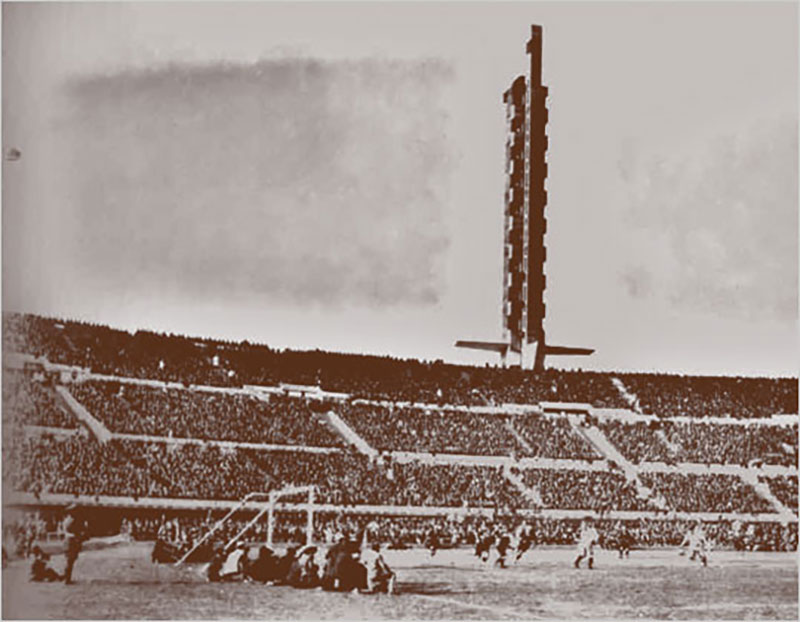
AS: That photo was taken in 1930 when Uruguay was playing a game during the first World Cup in Montevideo, in the Centenario Stadium. It wasn’t until 1985, when someone doing research on the history of Uruguayan soccer found the plate (back then glass plates were used for photo negatives), and when he examined the plate, he saw a small object shaped like a flying saucer in a corner of Centenario Stadium. So, this fellow went to one of the biggest newspapers in Uruguay and told them the story. The newspaper published it in 1985 with the headline, “A UFO in the Centenario Stadium in 1930.” Apprised of the fact, the Commission went to work, and we located a relative of the original photographer, who explained that in reality it was an auto-inflated cover with a balloon attached by a cord to one of the tribunes, which belonged to a well known company from that time that publicized sales of car covers in that way. And sure enough, when one enlarges the glass plate, you can even see the name of the company that made this type of publicity—thus this case was resolved as something conventional fifty-five years later.
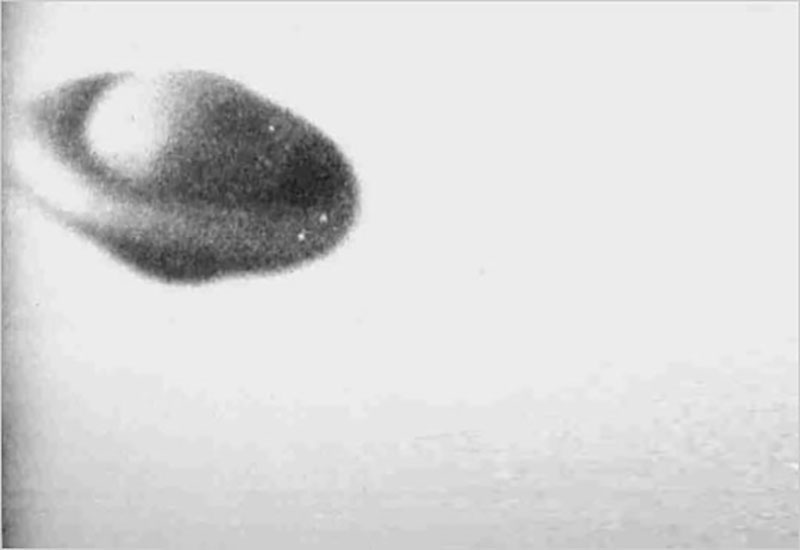
UFO Ground Traces in Durazno Department
AH: The other case that I am interested in is a landing incident in a place called Durazno, which is somewhat similar to the famous 1981 UFO landing case in Trans-en-Provence, which was documented by the French government.
AS: As matter of fact, I was the investigator on this case. At the time, I was an air force captain, and we learned about the case in the department of Durazno, in a place called Saint George. I won’t give the precise name of the farm, but the year was 1993. The farm owners were a married couple who lived with their son. They were about to start dinner one night when they observed through the window some spheres over the field in front of their property. At a distance of about 500 or 600 meters, they saw lights that they first thought were otter hunters pointing at various places with flashlights. As the lights persisted, they went outside and observed orange spheres hovering at low altitude over the neighbor’s field. Still attributing the lights to poachers or hunters, they finished dinner and went to sleep.
The next day, they found the neighbor and told him, “Last night we saw that you let some hunters into your field.” “No, no,” the neighbor responded, “I didn’t let anybody in, come see what I found.” They all then went to the field where the lights had been seen, and they found eight holes displayed in symmetrical order like a rhombus, with an approximate depth of 30 cm and 22 cm in diameter. These holes were apparently made by the orange spheres that were seen interacting over that terrain.
When CRIDOVNI visited the site, we found that the holes were really shaped like a rhombus. But what was weird was that the soil taken from the holes was spread out giving the impression that the soil was not extracted but just dug and left around the hole. We questioned all the witnesses and took ground samples from the both the center and the border of the hole, and also took background control samples from the terrain. These samples showed a decrease of the soil’s chemical composition, which was manganese, zinc, and phosphorous. All this made us speculate that perhaps the reason the spheres were glowing orange was due to their interaction with the terrain, extracting some type of chemical compounds which produced the lights seen by the witnesses.
We also interviewed other witnesses from a nearby farm who were herding animals at that time, and they too confirmed seeing two spheres coming from the area where the event took place. They described these spheres as flying at low altitude, passing over their heads, and ascending until they disappeared from view. So, we have some six witnesses who observed the behavior displayed by these luminous objects—I am not sure whether to call them objects or lights since we don’t know what they were, but the weird thing is not just the interaction with the terrain observed, but the decrease of the chemical compounds in the soil samples we collected.

AH: Tell me more about the holes.
AS: The holes had a diameter of approximately 20 to 22 cm and 30 cm deep. There were eight holes, all equal, and the soil taken from each hole was spread around each one. This gave the investigator the impression that the spheres entered the ground rotating over the terrain, and as they rotated they started to throw the soil around. That was the sensation we got when we saw all the soil spread around the holes.
CRIDOVNI’s Procedures and Documents
YD: When CRIDOVNI receives a report, what is the procedure? Does the witness have to fill a questionnaire? What is the method you follow?
AS: Well, when we receive a report, we go to the place and interview the witness, collect all the basic data, and provide the witness with a questionnaire. If the case deserves it, we do a full field investigation as in the case I just discussed. We try to find out a little bit about the witness, his cultural and educational levels, his reputation in the area in which he lives. In other words, we try to get a witness profile, and then we look at the level of strangeness of the event itself. We use for that an evaluation manual based on percentages, which tells us if an event is more or less conventional when compared to what we know today about aerospace developments and such.
YD: How long does it take to investigate a report?
AS: That depends on the event. For example, we can resolve a case in two or three days if you don’t have to wait for the analysis of samples or animals (i.e., cattle mutiliations). But, in a simple case it usually takes two to three days if the case falls into the conventional category. Now, if it’s unconventional, then the case remains open waiting for new data. We have open files for many years.
AH: Are the documents generated by the Commission in the last thirty years available to the public? Can they be viewed?
AS: We always give the information and the results of all our investigations to the public. The files are confidential for the reason that they provide the identity and the address of the places where the events took place, and there is a law in our country that protects privacy, so we are not allowed to release the files themselves. But, what we do instead is provide answers to specific questions. For instance, in 1986, there was a report of airplanes chasing a UFO, and people wanted to know what happened with that case. So we give them that information. We have no problem in providing the final report, but what we cannot give to the public are the folders in our archives because, as I said, they contain confidential information, and sometimes people don’t understand that the witnesses doesn’t want to be bothered.
AH: Other countries censor or redact the name or address of the person, but the rest of the document is released, such as the United States with the Freedom of Information Act.
AS: Yes, I know that. I’ve seen what is done in the United States, but in Uruguay the privacy law is such that you cannot provide information that can lead to finding a particular person in his home or any place where he can be bothered by the press. But, otherwise, we have no problem in sharing the data. In fact, one of our presidents published a book in Uruguay in which he discussed twenty of the most interesting cases from our files. The book was published ten years ago and is entitled, Uruguay’s Official Open Archives. That is one example of the openness our Commission always strived to provide.
Air Force Fighters Chase UFO in 1986
AH: Can you please describe in more detail the case of the 1986 airplane UFO chase?
AS: Yes, the case of the Pucará air force fighters in 1986. While flying during training maneuvers near a hydroelectric dam, the pilots observed a luminous round object hovering right on top of the dam, which is in a restricted flight zone. Well, that caught the pilots’ attention, who asked the control tower if they had any report of a lost aircraft or any type of civil airplane conducting an authorized night survey flight in that area. There was nothing in that zone, and so they requested permission to approach the object in order to identify it.

When the pilots started the approach maneuver, the object made an evasive turn and escaped at amazing speed. The fighters were unable to match the object’s speed, so they went back to the training zone, but a few minutes later they realized he object was flying again over the hydroelectric dam. So, they tried to approach the object again, but this time at higher speed. The object then made a final evasive maneuver and headed west, changing rapidly from a yellowish-white color to a reddish-orange, disappearing from view at an incredibly fast speed.
The pilots were totally baffled by this event and decided to return to the base. When they landed, they were told that a large power blackout had occurred in Montevideo, caused by overheating of one of the lines from the dam which powered Montevideo, actually overheating of a transformer. The investigators and the pilots determined that the blackout could have been caused by the object’s action over the dam, which overheated the line.
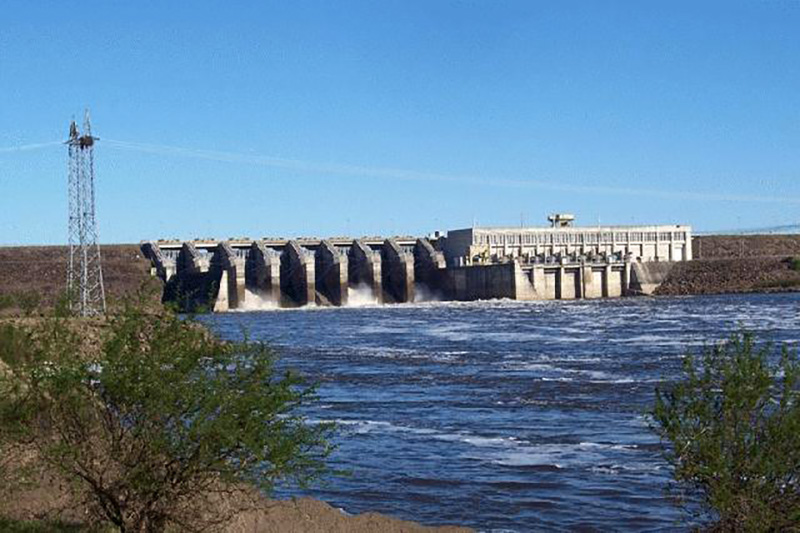
YD: But they were not linked?
AS: We were never able to know if the [blackout] was or was not caused by the actions of an unidentified flying object over the dam; but, the overheating occurred and the transformer failed at that time the object was flying just above. Now, we are not able to prove that the object actually affected the transformer, but the timing did coincide. Still, the most impressive part is the testimony of the pilots trying to intercept this object.
Conclusions and a Call to Integrate Other South American Agencies
AH: Can you give us your conclusions about the mysterious part of this phenomenon, not those cases that were explained by conventional objects or phenomena?
AS: Sure, I can give you my personal thoughts. I can’t speak officially for the Commission because one of the key tenets of our Commission is that each member has his own personal opinion about the subject, particularly for those who have worked there a number of years. The UFO phenomenon is recognized by the Uruguayan Air Force as a real phenomenon. Its point of origin is unknown, and we don’t know if it’s a lower atmosphere phenomenon that we haven’t catalogued yet, a physical phenomenon, or if there is a possibility of someone sending a probe to our system, to our planet, just as we are sending probes to Mars and other parts of our planetary system.
Now, as far as my own tentative personal conclusion, I do believe there could be superior beings to us, and I am not sure if they are living here on Earth or are coming from somewhere else. What is clear is that these objects seen in the skies are not new, they were seen in Uruguay fifty years ago, but the technology (reported in the sightings) didn’t exist fifty years ago—today some of this technology does exist, so who had this technology fifty years ago?
My own hypothesis, after so many years of investigation, is that there is a superior intelligence to ours behind this phenomenon, perhaps an undiscovered race—I don’t know if it’s human—which is hidden somewhere, in the oceans or mountains or jungles, I don’t know, which perhaps suffered a catastrophe five hundred thousand years ago and is in orbit somewhere with the remains of their civilization. This is what I can deduce because I haven’t had the good fortune of having a UFO on the table for analysis, which is what we all want. The air force doesn’t rule out the extraterrestrial hypothesis, but personally I am inclined to believe in a closer hypothesis, that of a superior intelligence interacting with us in these unidentified flying objects. From where they come or how they get here, I don’t know. But we are seeing them, we are photographing them, we have chased and tried to grab them in order to identify them, but without success.
YD: Recently, CRIDOVNI signed an agreement with the CEFAA in Chile?
AS: Yes, in April 2012, we signed an agreement with the Chilean Air Force to share information and data about sightings reported in both countries. Chile has a very large number of sightings; Uruguay a little less. We are investigating about thirty to forty cases per year, but we signed an agreement to share data and even to conduct joint projects, as we did already once on a case at Easter Island. The idea is to get the different Latin American air forces with official commissions—Peru, Ecuador, and Argentina—to integrate with the agreement that we signed with the Chileans.
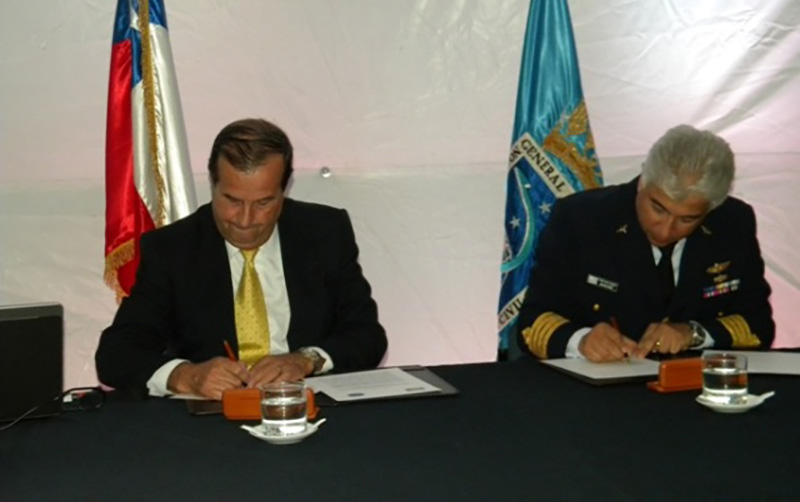
YD: So, the first country was Chile?
AS: Chile and Uruguay were the first countries to reach this agreement, but the idea, our goal, is to invite the other countries to come here because our air force is celebrating its first centenary in 2013. I have already made a proposal to our commander-in-chief to invite other air forces with official investigations to join this agreement and meet in Montevideo in 2013 to sign—so that we can obtain and share a bigger official data bank.
YD: And, with this association of official groups, what would be the role of the civilian investigators and groups?
AS: At least, in Uruguay, the [civil] investigators are already integrated into our Commission since the inception of CRIDOVNI when they were invited to participate. Many of them are already fully integrated to our group, which is both a military and civil commission. I am not sure about the level of integration with civil investigators in the other countries, but most of them followed the Uruguayan model.
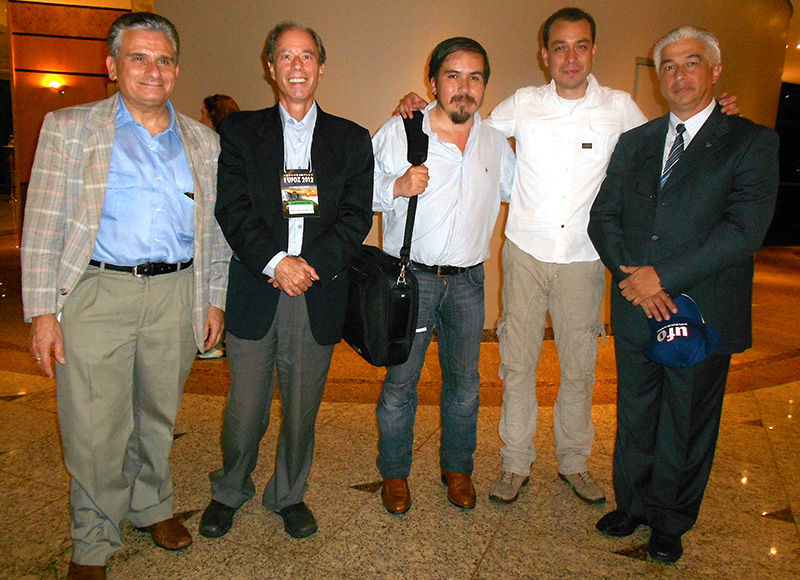
YD: When you speak at conferences, do you represent the institution officially or semi-officially?
AS: I have done it both ways. I retired from the air force five months ago, but I continue my work in the Commission as its technical director. When I go abroad, I can do it either officially or privately. It just depends on the type of invitation.
This article originally appeared in Issue #19 (April/May 2013) of Open Minds Magazine. Back issues can be found here.



